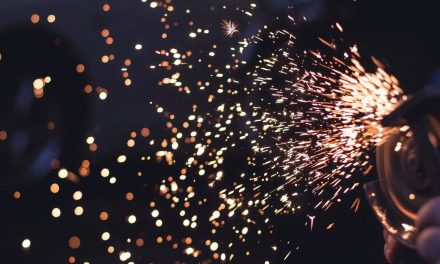New ‘Urban Mining’ Tools Map Valuable Resources in EU’s e-Waste, Scrap Vehicles, Mining Waste
Standardized, consolidated data helps to identify recovery potential of secondary raw materials worth € billions wasted annually
Expert organizations have united to create the first European database of valuable materials available for “urban mining” from scrap vehicles, spent batteries, waste electronic and electrical equipment, and mining wastes.
The Urban Mine Platform (urbanmineplatform.eu), created by 17 partners in project ProSUM (Prospecting Secondary Raw Materials in the Urban Mine and Mining Wastes), presents the flows of precious and base metals and critical raw materials in products in use and throughout their journey to end of life.
The database reveals the amount of valuable materials recovered or lost in the EU’s scrap vehicles, batteries, computers, phones, gadgets, appliances and other high tech products discarded annually – roughly 18 million tonnes in all — the weight of 3 million African elephants.
The EU, Norway and Switzerland generated around 10.5 million tonnes of waste electrical and electronic equipment (WEEE) in 2016 – about 23% of the world total. In addition, 2 million tonnes of batteries and some 7 to 8 million tonnes of EU vehicles reach their end-of-life annually. All represent a rich source of secondary critical raw materials (CRMs).
The recently published Global e-Waste Monitor (http://bit.ly/2lQC6b5) reported that the world’s 44.7 metric tonnes of e-waste alone (not including vehicles) in 2016 contained €55 billion worth of precious metals and other high value materials.
The Urban Mine Platform contains data for elements and materials in high abundance in these waste products, mainly base metals, precious metals, and critical raw materials.
Dynamic charts offer detailed data and market intelligence on:
• The number and type of products placed on the market, in-stock (in use and hibernating), and generated as waste
• The compositions of key components, materials and elements, such as aluminium, copper, gold or neodymium, in batteries, electronic and electrical equipment (EEE), and vehicles
• Waste flows, including amounts collected, estimates for small batteries and EEE in unsorted municipal solid waste, exported used vehicles, as well as the amount of vehicles, batteries and EEE of unknown whereabouts.
Prospecting Secondary Raw Materials in the Urban Mine
The ProSUM consortium says “urban mining” to recover valuable CRMs from wastes is vital for securing ongoing supplies for manufacturing and limit dependence on non-EU suppliers.
To that end, the project partners created from over 800 source documents and databases “a state of the art knowledge base, using best available data in a harmonized and updateable format, which allows the recycling industry and policymakers to make more informed investment and policy decisions to increase the supply and recycling of secondary raw materials.” It contains “all readily available data on market inputs, stocks in use and hibernated, compositions and waste flows of electrical and electronic equipment (EEE), vehicles and batteries for all EU 28 Member States plus Switzerland and Norway.”
Pascal Leroy, Secretary General of the WEEE Forum, a Brussels-based not-for-profit association and ProSUM project coordinator states: “Three years in the making, this consolidated database is the world’s first ‘one stop shop’ knowledge data platform on CRMs in waste products — easy to access, structured, comprehensive, peer-reviewed, up-to-date, impartial, broad in scope, standardized and harmonized, and verifiable.”
In its report, the consortium says that “if all of the EEE in stock in households, businesses and public space was shared out between each EU28+2 inhabitant, each person would own close to 44 EEE products plus another 12 (energy saving) lamps and 33 light fittings, which are counted separately. In addition, there is 0.50 vehicle per person in the fleet. In vehicles, electronics and other applications, there are another 40 batteries in stock per person.”
Each EU inhabitant, the report says, would own 250 kg of electronics — 3.5 times the average adult weight — in addition to 17 kg of batteries and almost 600 kg of vehicle.
Product trends: The effect of ‘more,’ ‘lighter,’ ‘smarter’ products on raw materials consumption
The report notes that a smartphone contains around 40 different critical raw materials, with a concentration of gold 25 to 30 times that of the richest primary gold ores. Furthermore, mining discarded high tech products produces 80% less carbon dioxide emissions per unit of gold compared with primary mining operations.
ProSUM has shown that an increasing number of products contain precious resources such as neodymium (vital for making permanent magnets in motors), indium (used in flat panel displays) and cobalt (used in rechargeable batteries). The Urban Mine Platform makes it possible to see the stocks and flows of these products.
Jaco Huisman of the United Nations University, and ProSUM Scientific Coordinator, states: “Until now, data on such critical raw materials have been produced by a variety of institutions, including government agencies, universities, NGOs, and industry, with the information scattered across various databases in different formats and difficult to compare or aggregate and often representing an outdated snapshot for a certain year only. The ProSUM effort helps remedy that problem, and enables the identification of so-called “hotspots” – the largest stocks of specific materials.”
Electrical and Electronic Equipment in the urban mine

The ProSUM project successfully harmonized all available information to map the very dynamic development of the Urban Mine over time. As illustrated in the figure, the entire stock of electronic products constitutes a considerable, and for some materials, rapidly changing Urban Mine for the years 2000 to 2020 (last 5 years projected). The figure displays for the first time the combined effect of rapidly increasing sales in numbers of electronic products, increasing miniaturization of printed circuit board volumes and products appearing (like tablets) and disappearing (like cathode ray tubes) from the market.
These product trends affect the quantity of raw materials in the Urban Mine where, for example, plastics and aluminium content are increasing, copper and gold are stabilizing, and printed circuit board tonnages are in decline.

Europe can potentially mine 2 million tonnes of batteries per year
With respect to batteries, the report points to a sharp jump in the European Union, Switzerland, Norway since year 2000, with 2.7 million tonnes expected to be put on the market in 2020, up from roughly 1.7 million tonnes in 2000.
European authorities know the fate of only half of the estimated 2 million tonnes of batteries discarded in 2015, about 90% of them lead-based.
Other types of batteries available for urban mining — nickel-metal hydride, zinc-based and lithium-based — are a significant source of lithium (7,800 tonnes), cobalt (21,000 tonnes) and manganese (114,000 tonnes).
Vehicles: An increasingly rich source of critical raw materials
Europe’s end of life vehicles (ELV) represent a large source of secondary base metals like steel (213 million tonnes), aluminium (24 million tonnes) and copper (7.3 million tonnes), as well as platinum and palladium used in car catalysts.
Increasingly, vehicles also contain large amounts of critical raw materials due to electronics, as well as alloying elements used in steel, aluminum and magnesium.
Few electric vehicles have yet reached end of life. With sales rising, these will be a source of growing importance for secondary raw materials like neodymium, lithium and cobalt.
The report notes that more than 40% of registered vehicles are “of unknown whereabouts” — a gap attributable in part to unreliable data on used vehicles traded within the EU, unreported recycling, and exports beyond the EU.
Mining Waste
The project is also amassing information about resources available in mining waste, which deposits are commonly very large but of low metal grade. New data, such as location, type of waste and origin available in a special extension of the database at Minerals4EU (http://minerals4eu.brgm-rec.fr).
Mining waste differs in many respects from the other product groups in ProSUM in that there is no EU legislation that requires recycling, there is no major recycling industry, and Eurostat statistics on mining waste are sparse and only at country level.
What’s next?
The project outcomes are embedded in the European Commission’s (EC) Raw Materials Information System (RMIS – http://rmis.jrc.ec.europa.eu) in order to create a more comprehensive and structured repository of knowledge related to primary and secondary sources consumed in the EU, relevant for many stakeholders:
• Manufacturers can gain confidence about future recycled raw material supplies.
• Recyclers will have better intelligence about the changes in product types and material content which impact on their business and provide future recovery potential.
• The mining industry will have greater certainty about the quantities and types of materials needed in the marketplace, mitigating risk and improving profitability.
• Policymakers will be better informed on raw material supplies, which affect jobs and financial institutions, and how materials are linked to energy consumption.
• Researchers will have better data quantity, quality, completeness and reliability.
Maintaining the Urban Mine Platform
The consortium has developed detailed recommendations to create better quality data and continuously update the database, including:
• Improving the characterisation of CRM content in products and waste
• Further quantifying stocks and flows in the urban mine and describing all kinds of complementary and leakage flows
• Continue harmonizing data, EU reporting and the interoperability of data and datasets
• Expand Urban Mine Platform’s scope to recoverable materials in other waste strea












